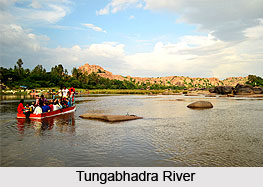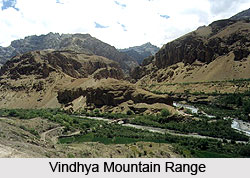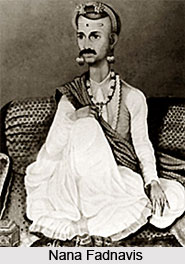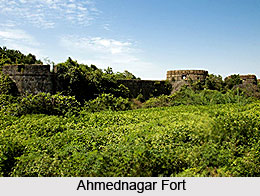 The early history of Ahmednagar starts from 240B.C. when the vicinity is mentioned in the reference to the Mauryan Emperor Ashoka. It was not place of any district importance but small hamlets did lie in the neighbourhood of the present city and were regarded as important by-pass places in between Junner and Paithan. As per history the Andhrabrityas is the name of the dynasty of the ruling kings whose powers lasted from 90 BC to 300 AD and who at the time ruled the Deccan held Ahmednagar in their sway. After that the Rashtrakuta Dynasty ruled over Ahmednagar till about 400 A.D. and the early Chalukya and Western Chalukya kings till 670 A.D. The Rashtrakuta kings again ruled Ahmednagar from 670 to 973 A.D. Govind III (785 to 810) was the mightiest of the Rashtrakutas whose kingdom stretched from Marwar and Rajputana in the north to Tungabhadra River in the south. The caves and temple at Harishchandragad in Akola Tahsil were carved and built during the reign of the Western Chalukyas.
The early history of Ahmednagar starts from 240B.C. when the vicinity is mentioned in the reference to the Mauryan Emperor Ashoka. It was not place of any district importance but small hamlets did lie in the neighbourhood of the present city and were regarded as important by-pass places in between Junner and Paithan. As per history the Andhrabrityas is the name of the dynasty of the ruling kings whose powers lasted from 90 BC to 300 AD and who at the time ruled the Deccan held Ahmednagar in their sway. After that the Rashtrakuta Dynasty ruled over Ahmednagar till about 400 A.D. and the early Chalukya and Western Chalukya kings till 670 A.D. The Rashtrakuta kings again ruled Ahmednagar from 670 to 973 A.D. Govind III (785 to 810) was the mightiest of the Rashtrakutas whose kingdom stretched from Marwar and Rajputana in the north to Tungabhadra River in the south. The caves and temple at Harishchandragad in Akola Tahsil were carved and built during the reign of the Western Chalukyas.
After the Western Chalukyas, Ahmednagar passed on to the Deogiri Yadavs who ruled from 1170 to 1310 AD. Deogiri (modern Daulatabad), seventy-four miles north east of Ahmednagar, was the capital city of Yadavs. The most notable minister and statesman of this time was Hemadri who invented modi script and is still being studied by the intelligentsia. Hemadri was indeed a genius and is credited with lending the idea of constructing buildings without the help of limestone and mortar. Well cut stones of medium size across each other were placed and filled upon each other in particular angles in such a manner that walls were erected in the shape of temple. Twenty six such temples scattered over the whole district that had been built in this style.
 The famous king of Yadav was Ramdeorao. Otherwise strong and brave, the military unpreparedness of the king made face defeat at the hands of Ala-ud-din Khilji, the commander-in-chief of the Mughal king of Delhi at Devgiri in 1294. This was the first ever invasion of the Muslim kings in the South across the Vindhya mountain range. This victory at the very invasion gave a boost to the Muslim ambition of establishing Muslim stronghold in the Deccan. With Ala-ud-din`s death in 1316, Ahmednagar was taken over by his son, Kutbuddin Mubarak Shah. However in 1344, the Hindu rulers of Karnataka and Telangana formed an alliance and put an end to the Muslim rule in the region. The lead was taken by Alladin Hasan Gangu was successful in overthrowing the power of Delhi emperors and establishing an independent sovereign kingdom named after his Brahmin preceptor Gangu Brahmin at Gulbarga in 1347. The kingdom is known as Bahamani or Brahmin kingdom. This kingdom lasted for 150 years ruled by 13 kings after Hasan Gangu Bahamani.
The famous king of Yadav was Ramdeorao. Otherwise strong and brave, the military unpreparedness of the king made face defeat at the hands of Ala-ud-din Khilji, the commander-in-chief of the Mughal king of Delhi at Devgiri in 1294. This was the first ever invasion of the Muslim kings in the South across the Vindhya mountain range. This victory at the very invasion gave a boost to the Muslim ambition of establishing Muslim stronghold in the Deccan. With Ala-ud-din`s death in 1316, Ahmednagar was taken over by his son, Kutbuddin Mubarak Shah. However in 1344, the Hindu rulers of Karnataka and Telangana formed an alliance and put an end to the Muslim rule in the region. The lead was taken by Alladin Hasan Gangu was successful in overthrowing the power of Delhi emperors and establishing an independent sovereign kingdom named after his Brahmin preceptor Gangu Brahmin at Gulbarga in 1347. The kingdom is known as Bahamani or Brahmin kingdom. This kingdom lasted for 150 years ruled by 13 kings after Hasan Gangu Bahamani.
In 1422, it was the turn of Ahmad Shah Wali to attack Ahmednagar. He was the person responsible for building the Bidar Fort. From this time onwards Ahmednagar was slowly approaching to an era when the Nizam Shahi dynasty would be established on its land. By 1490, Malik Ahmad was successful in establishing the Nizam Shahi dynasty in Ahmednagar. The reign continued till 1636. This dynasty was replaced by the Mughal rule in Ahmednagar.
After the death of Nizam-ul-Mulk, there issued a quarrel between his two sons, Salabat Jung and Ghazi-ud-din. In this political mess the Nizam`s commandant Kavi Jung betrayed the fort of Ahmednagar to the Peshwa, the minister of the Maratha power. War followed between the Nizam and the Peshwas in which the Nizam was defeated in 1760 at Udgir. Besides other concessions the Nizam confirmed the grant of Ahmednagar and Dualatbad and also gave up the greater part of the province of Ahmednagar. The Nizam was again defeated by the Maratha in 1795 at Kharda. After the death of Sawai Madhavrao Peshwa in 1795, quarrels arose among the Maratha noblemen. In 1797 Daulatrao Sindia took the fort of Ahmednagar from Bajirao Peshwa, as a price of his help to him to raise him to the post of Peshwa. The famous statesman Nana Fadnavis was imprisoned in Ahmednagar fort in 1797 by Sindia. At last he was released in 1798 but sorely discouraged, Nana Fadnavis died in 1800.
 Bajirao Peshwa was continuously at war with Yeshwantrao Holkar and Daulatrao Sindia. Finally he concluded a treaty with the British for the safety of his Ministership, on 31st December 1802 at Bassein. Lord Wellesley attacked Ahmednagar city and captured it. Then he laid a siege to Ahmednagar fort on 9th of August 1803 and captured it on 12th of August 1803. General Wellesley then returned the fort of the Peshwa soon i.e in 1803. The Holkar also came to terms with the British. There was widespread disorder in the area due to famine and hundreds were looted, murdered and massacred by the Pindaris. There was a rebellion against the British rule by common people headed by Trimbakji Dengale of Sangamner. The British troops soon brought the circumstances under control. At last a treaty was concluded with Bajirao Peshwa at Pune by virtue of which the Ahmednagar Fort was handed over to the English.
Bajirao Peshwa was continuously at war with Yeshwantrao Holkar and Daulatrao Sindia. Finally he concluded a treaty with the British for the safety of his Ministership, on 31st December 1802 at Bassein. Lord Wellesley attacked Ahmednagar city and captured it. Then he laid a siege to Ahmednagar fort on 9th of August 1803 and captured it on 12th of August 1803. General Wellesley then returned the fort of the Peshwa soon i.e in 1803. The Holkar also came to terms with the British. There was widespread disorder in the area due to famine and hundreds were looted, murdered and massacred by the Pindaris. There was a rebellion against the British rule by common people headed by Trimbakji Dengale of Sangamner. The British troops soon brought the circumstances under control. At last a treaty was concluded with Bajirao Peshwa at Pune by virtue of which the Ahmednagar Fort was handed over to the English.
When the British Government took possession of Ahmednagar much of it was almost ruined. Many former rich areas were depopulated because of famine and continuous fighting between the British soldiers and the freedom fighters. They continued to rise in arms taking resort to villages and the hills and mountains-mostly Parner, Jamgao and Akola areas. The Kolies and the Bhils harassed the British troops intermittently. Raghoji Bhangria headed this mutiny. At last he was caught at Pandharpur in 1847 and was immediately hanged.
 During the Sepoy Mutiny, 1857 Ahmednagar was in considerable disturbance. The active freedom fighters were about 7000 Bhils under the leadership of Bhagoji Naik. They were active in the hilly tracks and especially in the Parner, Jamgao, Rahuri, Kopargaon and Nasik areas. But at last all these attempts to rise against the British failed and the slavery came to stay.
During the Sepoy Mutiny, 1857 Ahmednagar was in considerable disturbance. The active freedom fighters were about 7000 Bhils under the leadership of Bhagoji Naik. They were active in the hilly tracks and especially in the Parner, Jamgao, Rahuri, Kopargaon and Nasik areas. But at last all these attempts to rise against the British failed and the slavery came to stay.
During the freedom struggle in the 20th century, Bal Gangadhar Tilak organised political movement in the whole of India and was put behind bars by the British Government. But he passed away in 1920 and Mahatma Gandhi took up the leadership and carried on the responsibility of organizing Civil Disobedience Movement. Thousands offered Satyagraha and courted arrest. The famous leader of Ahmednagar, Raosaheb Patwardhan, was underground for many days. Achyutrao Patwardhan was never arrested by the British since he was carrying on the freedom struggle secretively. The veteran leader of Ahmednagar district, Senapti Pandurang Mahadeo Bapat was the most fearless and was one of the greatest disciples of Mahatma Gandhi. He carried on the Mulshi Satyagraha bravely and was arrested in 1937. He was kept behind the bars till India achieved her independence. India attained her freedom on 15th of August 1947 and with this Ahmednagar also achieved its independence. The flag salutation ceremony took place on the ramparts of the Ahmednagar Fort at 8 am on 15th August 1947.



















